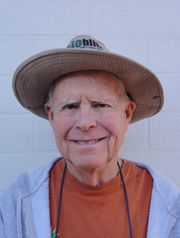 Arizona Game & Fish Heritage Fund O&M Resolution Workgroup Meeting Summary, 08/06/14
Arizona Game & Fish Heritage Fund O&M Resolution Workgroup Meeting Summary, 08/06/14
Attendees: Bob Vahle, Bill McLean, Josh Avey, Beth Woodin, Allen Taylor, Jim Unmacht, Jim deVos, Jim Hinkle, Jorge Canaca, Pat Barber, and Marianne Cox. Not attending: Bob Hernbrode Location: AGFD Headquarters
Meeting Summary:
- Review of agenda, identification of additional agenda items including:
- Addition of crowd funding to agenda for discussion
- Clarification of the agenda: ‘discuss mechanisms/ability/guidance for Commission to consider regarding removal of non-historical structures properties that…’
- June 16 meeting summary correction to incorporate suggestion to seek repayment of Heritage Fund funds previously swept by legislature to the list of approaches considered.
- Group reviewed summary of Fiscal Year 13, 14, and 15 costing (budgeted and expenditure) as well as anticipated deferred maintenance costing for Heritage Fund acquired properties.
- Discussion and agreement amongst group to allow recommend changing recommended modification to 17-298 whereby the Heritage Fund acquisition portion of the fund would change from 40% to 35% to allow for funding Heritage Fund acquired property operation and maintenance costing from the non-acquisition portion of the fund.
- Discussed recommending amendment of Commission Policy to require annual Commission approval for use of Heritage Fund grant funds towards Heritage Fund acquired property operation and maintenance costing.
- Discussed the need to utilize an open comment process to identify support for the recommendation to reduce the Heritage Fund acquisition portion from 40% to 35%; it was noted that this work group was established with membership intended to represent stakeholders on this issue and that the expectation is that work group membership should be providing information regarding recommendations to the Commission, expressing positions to the work group and serving as liaisons and conduits of information in support of public process and transparency.
- Discussed approach and recommended modification to 17-298 such that acquisition may include fee simple title, or any possessory or non-possessory interest in land.
- Disposal of property that does not carry the Heritage Fund value is already possible albeit cumbersome.
- Structure removal on existing or future properties was discussed as a suitable recommendation.
- Recommendation to minimize acquisitions that have structures that would have regular operation and maintenance costs.
- Discussed approaches and feasibility for use of endowments (long term) and crowd funding and corporate sponsorship approaches in building a privately held endowment fund.
A suite of options to present to the Commission at the September Commission meeting was developed that entail: 1) long term funding generation/savings (solutions), 2) Short term funding generation/solutions, and 3) Legislative changes. See list of options below.
Work group reviewed the objective and tenets put forth by the Commission and determined that they met those objectives to the extent possible. No further meetings are needed.
Action Items:
- Send list of recommendations for Commission consideration – Marianne Cox
- Present options developed by workgroup to Commission for consideration at September Commission meeting – Jim deVos
Adjourn
Arizona Game & Fish Heritage Fund O&M Resolution Workgroup Recommendations List for Commission Consideration, August 6, 2014
Long Term Funding Generation/Savings (solutions)
- Endowment – held by 501(c)3
- Divest of non-sensitive species value properties (those portions that no longer meet intent of purchase)
- Remove non-value-added (non-historic) structures from properties
- Investigate the economic potential of new programs such as a wildlife watching Heritage Fund stamp
- Modify Heritage Fund language to change acquisition fund percent from 40 – 35% so 5% ends up in IIPAM from where O&M expenditures can be made
- Modify Heritage Fund language to allow for acquisition via non-possessory language and the divestiture of these properties using same
- Seek corporate sponsors
- Develop an O&M assessment with each new property being considered for purchase
Short Term Funding Generation/Solutions:
- Minimize acquisitions that have structures that need O&M
- Crowd funding for specific O&M actions
- Seek legislative refunding of funding swept by prior legislature in 2003 – $10 million from Heritage Fund acquisitions fund
Legislative Changes:
- Change percentage in Heritage Fund Acquisition fund from 40% to 35% so extra 5% ends up in IIPAM from where O&M expenditures can be made
- Allow for non-possessory acquisition such as conservation easement and disposal of property or portions of properties by “conservation buyer” under a conservation easement



You must be logged in to post a comment.